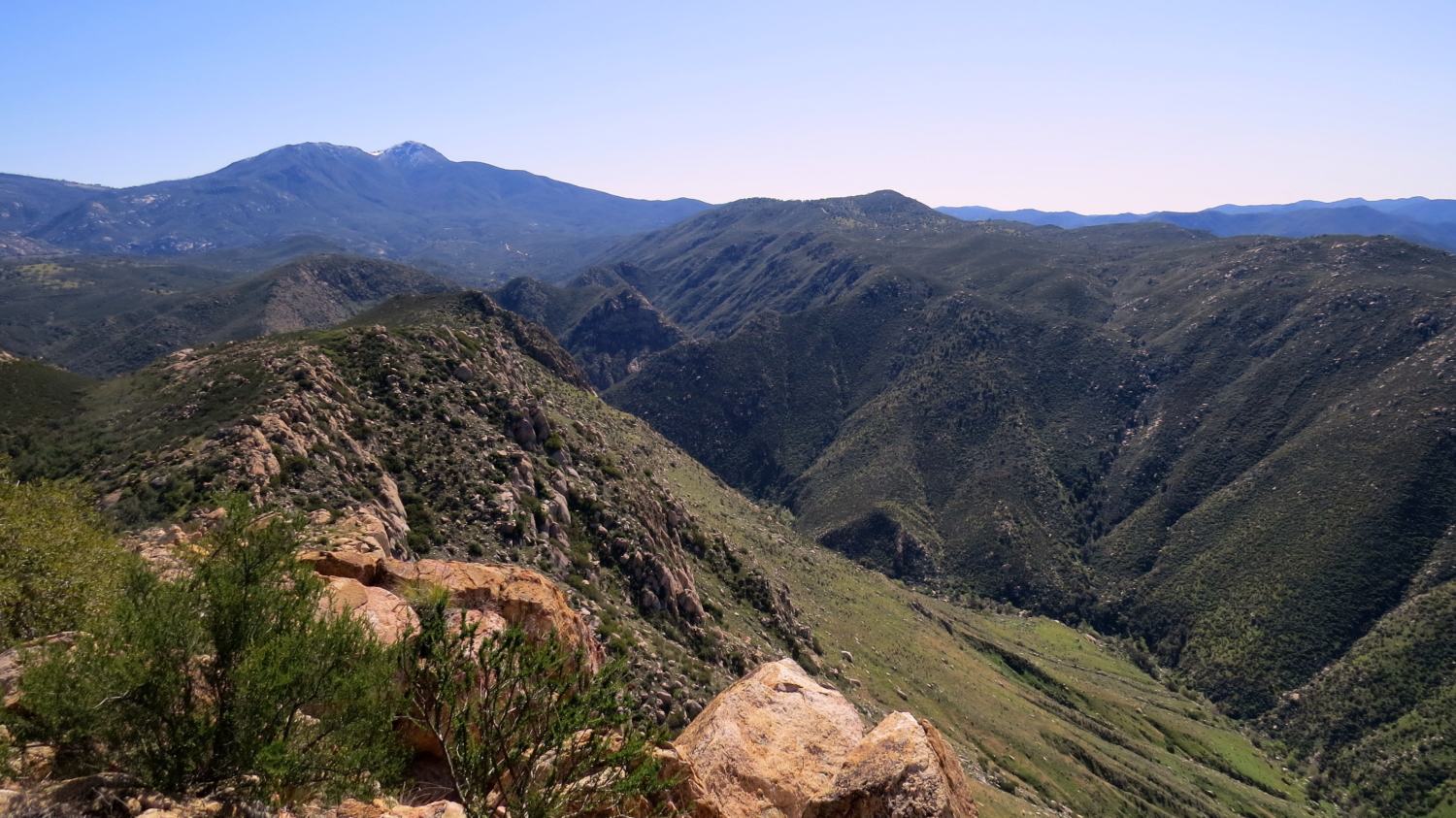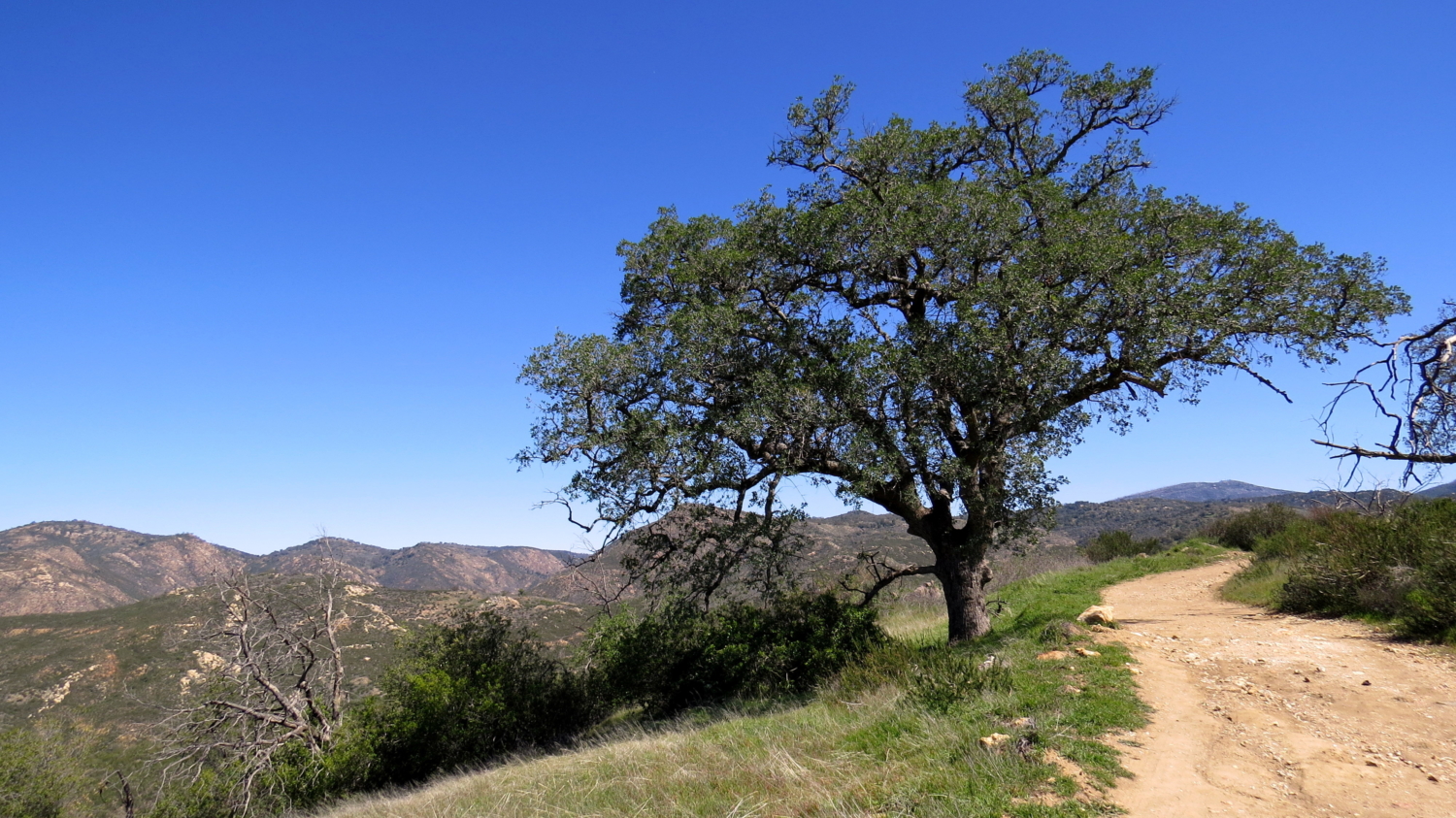Edit as of 5/10/2017: Prior to publishing this post, I was not aware that a recent closure precludes access to the summit. This closure protects the nesting and breeding areas for peregrine falcons, which nest along the south face and near the summit. This route travels through the current closure, which is in effect until July. Please review the information on raptor nesting and how Cleveland National Forest manages these sites. Additionally, here is a map detailing the closure.
Rising out of the San Diego River Gorge like a dragon’s spine, the lofty heights of Eagle Peak offer some of the most impressive views in San Diego County. This high point presides over several deep gorges, including the San Diego River Gorge and the Boulder Creek Gorge. The unique location of Eagle Peak affords equally unique views in all locations.

Ceanothus in bloom
Eagle Peak’s location adjacent to the eminently popular Three Sisters Falls means that it often gets overlooked by hikers looking to stumble and scramble their way down to the triple cascades. Adventurous hikers can combine the two, although the trail to the Three Sisters has become consistently more eroded and dangerous with the uptick in hiker traffic. Cleveland National Forest currently has plans to cut an official trail down to the falls and to make the user-created path to Eagle Peak an official, improved route.

Rolling hillsides above the San Diego River Gorge
Starting from the parking area on Boulder Creek Road Road, head due west along the remnant of an old 4WD road. After passing through low-growing chaparral still recovering from the 2003 Cedar Fire, you’ll dip into a saddle where you’ll reach a junction with the trail down to Three Sisters Falls at .7 mile.

Grassy flat and Engelmann oak

Wild peony
Beyond the junction, the trail continues west past a grassy flat shaded by Engelmann oaks before passing through a shallow valley south of Peak 3041 on the topos. Along the way, look for the nodding, wine-red blossoms of wild peonies, which linger unassumingly in the shade of larger chaparral plants. An old stock pond lies further west on the road, although it may be dry after years of drought.

Summit ascent
At 1.6 miles, a steep user-created trail begins to wind upward along Eagle Peak’s summit ridge. Along the way, you’ll encounter a handful of false summits. From the first of these summits, you’ll get a good look down into Boulder Creek’s gorge.

The craggy south face
You’ll also see the sheer cliffs on the peak’s south face. These rocky cliffs often host nesting sites for raptors – including golden and southern bald eagles – during the winter and spring. Because of the presence of nesting sites, it’s possible that Cleveland National Forest may enact temporary seasonal closures to protect the nesting areas for the birds. It may be wise to contact the Palomar District ahead of time to determine whether the area is open by calling 760-788-0250.

Boulder Creek Gorge with Cuyamaca Peak on the left
After working your way past the false summits, you will eventually come to the true summit at 2.2 miles. From the rocky summit, you’ll enjoy a panorama encompassing much of the center of San Diego County. The most prominent landmarks include the Cuyamaca Mountains to the east, the San Diego River Gorge directly north, El Cajon Mountain due west, and Viejas Mountain to the south. Look for the summit register, into which you can add your name and thus capture this moment of peak-bagging glory in perpetuity.
The return route retraces your steps. To extend your trip, you can include the route down to Three Sisters Falls to visit the falls. A few warnings on that, though: The gorge into which the falls spill their watery contents can become fantastically hot during the summer months. The trail down to the falls is becoming progressively treacherous with increased use. Finally, scrambling around the falls leads to frequent injuries and occasional rescues. If you combine the two hikes, you’ll want to hit the falls first, as descending into the gorge and climbing out at the end will be very exhausting after a long day of hiking.
Tags: Boulder Creek Gorge, Cleveland National Forest, Eagle Peak, San Diego River, Three Sisters Falls











